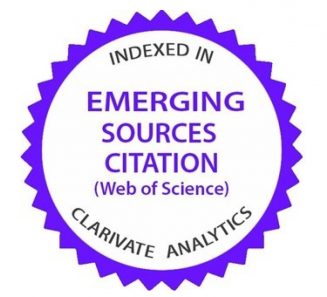|
|
Bulletin of the Chemists and Technologists of Bosnia and Herzegovina
Special Issue 2022
Publication date: June-July 2022 |
|
Table of contents
Catalysis and environment: the good, the bad and the ugly Plenary lecture
Suljo Linić
Abstract: It has become increasingly clear that human-induced CO2 emissions are having potentially irreversible impact on the environment. In this presentation, I will share my views on the current state of the CO2 pollution problem and discuss potential mitigation strategies. I will focus on the solutions that involve catalysts and discuss how achievable these solutions are, and which of the solutions gives us the highest probability to make positive impact. Most of these solutions will require abundant and economically viable generation of renewable hydrogen. I will discuss our work on solar splitting of water to form hydrogen on hybrid semiconductor/electro-catalysts systems. I will also discuss our recent efforts aimed at pairing the CO2 capture with in-situ electrochemical reduction of the captured CO2 molecules.
Bulletin of the Chemists and Technologists of Bosnia and Herzegovina Special Issues, 3.
Biomass oxy-fuel combustion technology as carbon neutral renewable source of energy to replace fossil fuels Plenary lecture
Farooq Sher
Abstract: Due to growing concerns about climate change, the heat and power sector is continuously facing challenges to reduce CO2 emissions. Carbon capture and storage (CCS) is one of the short-medium term measures that can mitigate CO2 emissions emitted from fossil fuels utilisation. Oxy-fuel combustion is a promising technology for CSS that can be integrated into the new and the current fleet of power plants. Biomass is a carbon-neutral renewable source of energy that can replace fossil fuels. If the biomass is utilised as a fuel in oxy-fuel combustion it could lead even to negative CO2 emissions. However, oxy-fuel combustion technology in fluidised beds is in the early stages of development and still needs a lot of research for improvement before its application on full-scale power plants. The basic combustion fundamentals of different biomass fuels in terms of energy production were studied using thermogravimetric analysis (TGA) under air, N2, CO2 and selected oxy-fuel (30%O2/70%CO2) reaction environments. Then a 20 kWth bubbling fluidised bed combustor (BFBC) was designed, manufactured and successfully tested for a range of biomass fuels under air and oxy-fuel combustion environments. The agglomeration and sintering behaviour of these biomass fuels during combustion under air was also investigated using different analytical techniques such as SEM-EDX, XRD and XRF. The biomass fuels investigated include domestic wood, industrial wood, miscanthus, wheat straw and peanut shell pellets. The BFBC testing of these biomass fuels focused on the influence of operating conditions, the effect of excess air level and fuel feed rate on the hydrodynamics, temperature profiles and emissions, NOx, CO2 and CO within the BFBC.
Bulletin of the Chemists and Technologists of Bosnia and Herzegovina Special Issues, 4.
Chemical characterization of surfaces and thin films for the development of new materials and quality control Plenary lecture
Janez Kovač
Abstract: Surfaces and thin films of solid materials play an important role in many technological fields like corrosion, catalysis, polymers, plasma surface engineering, coatings, tribology, implants, sensors, microelectronics, etc. Application of analytical methods with high surface and chemical sensitivity is important for a complete understanding of surface reactions, functional properties, and degradation of materials in such applications. Scanning electron microscopy - SEM in combination with EDXS is very often applied to analyze the morphology and elemental chemical composition with high lateral resolution. In this presentation, another two methods with high surface sensitivity will be presented, i.e., X-Ray photoelectron spectroscopy – XPS and Secondary ion mass spectrometry - SIMS. These methods have surface sensitivity in the range of 1-5 nm, making them unique surface probes. The XPS analyses can give information on chemical composition, oxidation states (identification of Cu(0)/Cu(1+)/Cu(2+), Ti(0)/Ti(3+)/Ti(4+)) and bonding of elements (C-C/C-O/O=C-O) at surfaces and thin films. The SIMS method allows the identification of a type of molecules and molecular structure at surfaces, which is particularly important for analyses of organic materials. The XPS and SIMS methods can be combined with ion etching to remove the surface layers and analyze subsurface chemical composition up to one micron. In such a way, a depth distribution in thin films and multilayer structures can be obtained. In this presentation, we will show typical applications of surface analytical methods XPS and SIMS in our laboratory for the development of new catalytic materials based on doped TiO2, a study of corrosion inhibitors, the application of the graphene-based materials, and the degradation of perovskite solar cells. Also, examples of surface analyses for quality control as support for industrial partners in Slovenia will be presented. SIMS. These methods have surface sensitivity in the range of 1-5 nm, making them unique surface probes. The XPS analyses can give information on chemical composition, oxidation states (identification of Cu(0)/Cu(1+)/Cu(2+), Ti(0)/Ti(3+)/Ti(4+)) and bonding of elements (C-C/C-O/O=C-O) at surfaces and thin films. The SIMS method allows the identification of a type of molecules and molecular structure at surfaces, which is particularly important for analyses of organic materials. The XPS and SIMS methods can be combined with ion etching to remove the surface layers and analyze subsurface chemical composition up to one micron. In such a way, a depth distribution in thin films and multilayer structures can be obtained. In this presentation, we will show typical applications of surface analytical methods XPS and SIMS in our laboratory for the development of new catalytic materials based on doped TiO2, a study of corrosion inhibitors, the application of the graphene-based materials, and the degradation of perovskite solar cells. Also, examples of surface analyses for quality control as support for industrial partners in Slovenia will be presented.
Bulletin of the Chemists and Technologists of Bosnia and Herzegovina Special Issues, 5.
Book of Abstract - Special Issue 2022 (full version)




